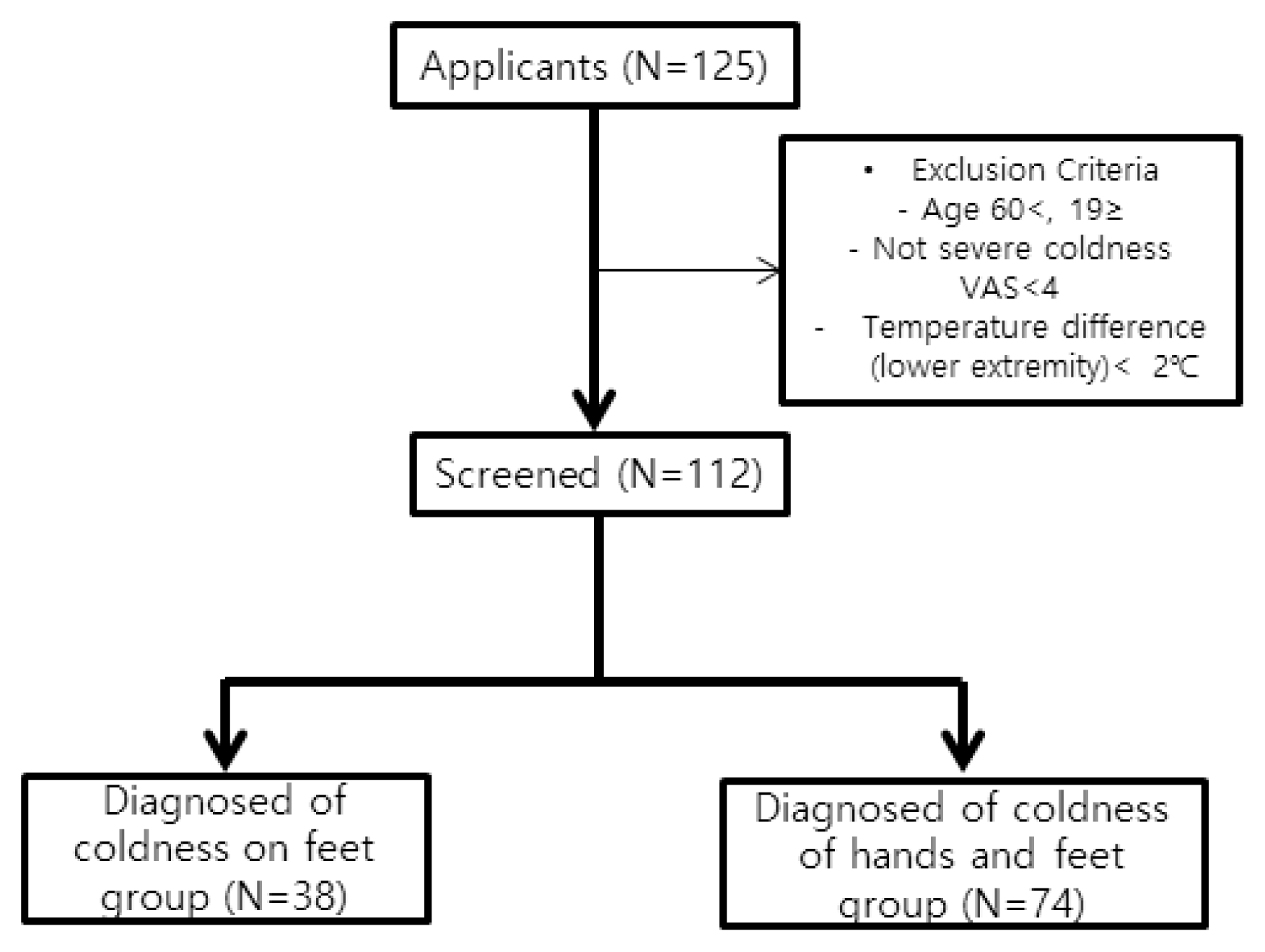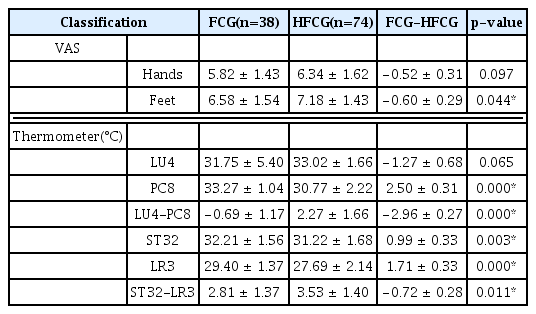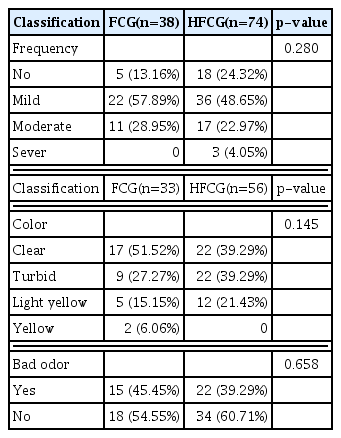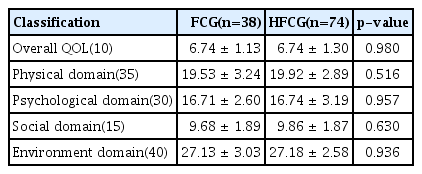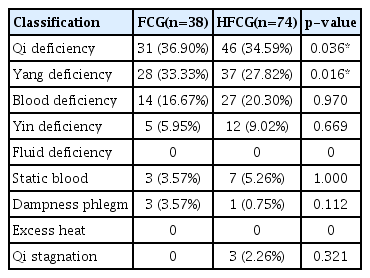Research on Pattern Identification and Clinical Characteristics of Female Patients with Cold Hypersensitivity of Hands and Feet
Article information
Abstract
Objectives
The purpose of this study was to research the demographical and gynecologic characteristics, quality of life, and analyze the pattern identification in female patients with cold hypersensitivity of hands and feet.
Methods
112 participants were recruited from May 2018 to April 2019 from three korean medical hospitals. The data was composed of general characteristics, degree of coldness of hands and feet, gynecological questionnaire, score of WHOQOL-BREF and pattern identification. We divided data into 2 groups: The group of patients who meet the criteria for diagnosis of coldness on feet and the group of patients who meet the criteria for diagnosis of coldness on feet and hands. We tried to compare data by groups using Excel 2016 for windows and SPSS for windows (Ver. 23.0).
Results
Throughout the study, we found differences between 2 groups in weight, body mass index (BMI), VAS score of cold hypersensitivity on feet, temperature of PC8, ST32, and pattern identification.
Conclusions
After the study, we confirmed that even though both groups suffer from cold hypersensitivity of hands and feet, they show clinical differences in each group and differences in pattern identification.

